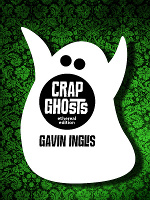Blog
Finding the Story
9th March 2012
Literary excavation by starlight.The process of coming up with an idea for a story is mysterious. Harlan Ellison liked to lie that he got all his ideas by post from a service in Schenectady. It’s not like Sudoku, where certain rules, rigorously applied, will always solve the problem. Yet it is something of a puzzle to be solved. I spend a lot of time on this when I’m teaching, because for many students getting started is the biggest obstacle. This is the process I used to come up with the idea for my story Starfield for Edinburgh City of Literature’s enLIGHTen project.
I got the commission email in last thing on a Friday. That weekend featured two tough deadlines, and I was teaching on the Monday evening, so I didn’t really engage with it until Tuesday. At which point I learned they wanted a piece of flash fiction by Friday, for audio delivery, to a very specific brief.
The story had to relate to David Hume’s old house, previously at 8 South St. David’s Street. It also had to be a response to a quote by the poet Allan Ramsay:
Schools polite shall lib’ral Arts display,
And make auld barb’rous Darkness fly away.
Now, understand, my normal process for writing a story includes leaving it in a drawer for two weeks, and having it workshopped at a monthly session with Writers’ Bloc. I am also absolutely dreadful at writing to themes. It’s just not how my idea factory works. I contacted Peggy at City of Literature and blagged a weekend extension to the deadline.
So now I was committed to doing this in about five days. It wouldn’t be the writing that would be the problem; 600 words is nothing. The challenge would be coming up with a workable, on-topic idea, and forcing it to come quickly. I saw three possible entry points: the location, David Hume himself, or liberal arts.
Location
I had time on Wednesday to walk down to David Hume’s house and look around. The actual pavement in front of the plaque, which is very high up for a casual observer, was dominated by black binbags and dirty phoneboxes. I shot a photo panorama, which came out distinctly uninspiring. However, I was intrigued to discover this crest on the same building, around the corner:
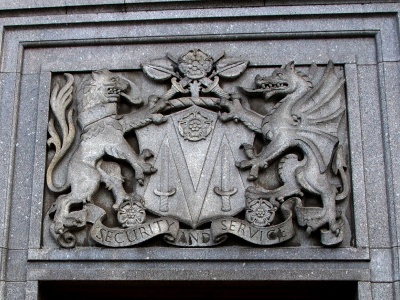
To find out more I headed to the Council’s historical planning records office on Cockburn Street. I explained what building I was interested in and was trusted with a stack of handwritten cards recording planning applications for St. Andrew Square dating back to 1861.
I could have spent literally all day digging around in these, but I had half an hour until the office closed. I followed the history of the building, number 8 St. Andrew Square. June 3rd, 1955, shows an application by The London & Lancaster Insurance Co, Ltd. to “Demolish Office Block and rebuild New Office”. Subsequent entries refer to Standard Property Investments.
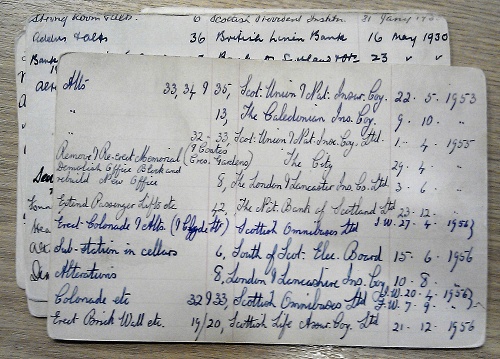
I headed to the Edinburgh Room in Central Library on George IV Bridge to see if I could follow the history of the site. They had a number of photographs covering the area. After a tedious process of form-filling to request them one by one, a helpful man brought me the entire stack. I saw the Ivanhoe Hotel, just down the road, now gone; a splendid dark townhouse across the street, on the corner of Rose Street, now gone; and eventually, a two-storey clothiers named Harrison & Son, on the very spot where the plaque was. It had a two-storey residential extension on top. And yes, it was gone, presumably demolished in 1955.
Fascinating as architectural history is, none of this was really getting me anywhere. David Hume’s actual house had vanished, probably demolished around the 1890s, and the story emerging here was of aesthetically pleasing buildings being replaced by bland grey blocks. It was too generic to address the location and it didn’t refer to the Allan Ramsay quote at all.
As I was close, I popped into the City of Literature offices to say hello and show Ali and Peggy the photos I’d found. Ali recommended James Buchan’s book, Capital of the Mind, for reading on the period and Hume in particular. That was to be my next approach.
David Hume
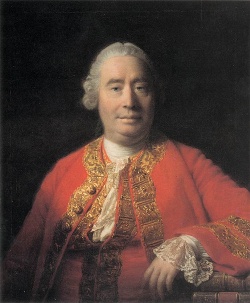
My initial knowledge about Hume was rather pitiful. There was that statue of him on the High Street with the shiny toe, of course. But the only philosophy I had studied related to scientific models, and artificial intelligence in particular. Hume’s contribution seemed immense, too much to grasp in such a short time.
I began with Three Minute Philosophy: David Hume and worked up from there, finding a comfortable level of description in some university lecture notes. Two aspects of his thinking seemed promising for a story: his ideas on cause and effect (we never actually experience this happening, we just construct the relationship ourselves) and his ideas on self and identity (we have no mind as such; we exist only as a bundle of perceptions). By this time it was Friday lunchtime.
I'm in a poker school with a bunch of supposedly educated people. On Friday night we were crammed around the table, booze and snacks scattered across the green felt, when it occurred to me to ask if anybody was “into David Hume”. There were a few seconds of awkward silence and then the game resumed.
However, around three in the morning, Ahmed gave me a lift home. He raised the subject again and revealed he was quite the David Hume enthusiast. We talked about Hume’s ideas. Ahmed urged me strongly to read the Treatise of Human Nature. I knew I didn’t have time for that, but our chat kept things uppermost in my mind as I went to bed. I felt there were definite possibilities in Hume’s exploration of self. When our perceptions stop, we are annihilated.
Liberal Arts
By Saturday afternoon I was ready to explore the final area: liberal arts. I had a feeling this didn’t mean the same thing in Allan Ramsay’s day as it does today. I took a chance, and trusted Wikipedia.
The entry on Liberal Arts was just what I needed. The original three liberal arts were grammar, rhetoric and logic. The medieval period added mathematics, geometry, music and astronomy. I was drawn to this second list, my kind of subjects. For the first time in the process I had the feeling of being onto something; an elusive energy which as a creative person you get to recognise and pursue.
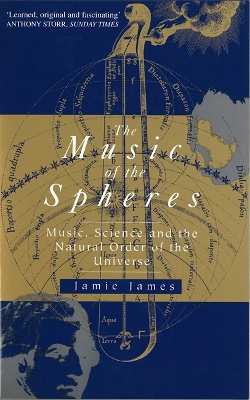
I use mind maps to force myself to think around a subject. (They’re also a good excuse to use coloured pens.) I started a mind map on liberal arts, but only managed to get down maths, music and astronomy when I had the first solid idea. CLUNK. It concerned the Music of the Spheres.
This is another ancient concept: that the movements of celestial bodies produce a kind of harmony. Not one which we can actually hear, but one expressed in terms of proportion and tone. The sun, moon and planets resonate; effectively they hum, and this has an intangible effect on our lives on Earth. Music is mathematical anyway, with harmony expressing ratios of frequency. (If anybody had explained this to me in terms of numbers when I was young, it might have saved my piano teacher, Miss Campbell, a lot of frustration.)
I grabbed Jamie James’s book on the subject, which had been at the bottom of a dusty stack for several years, and got reading about Pythagoras. I didn’t get far, because suddenly there it was, the idea. Combine Hume’s philosophy on self and perception, with this cosmic music. Tap into nighttime fears of insignificance and mortality, and offer reassurance with the omnipresent music of the universe. CLUNK again. I dare say Hume would have dismissed this reassurance … but he wasn’t my target audience.
The scene dressing was easy. The Occupy Edinburgh protest camp had just been evicted from St. Andrew Square. What better setting for existential fears than a tent on a winter night? Sleeping under the stars … and this was the final CLUNK. The structure was there. But one more thing was nagging at me.
The Stars
I remembered reading an article on sounds made from star vibrations. This endeavour combined music, astronomy, and maths, and conveniently, stars also lit up the Earth. It was a perfect fit for the enLIGHTen project.
I Googled carefully and tracked down a page of sonifications from the Kepler satellite. Listening to them, I thought some could fit behind spoken word without being a distraction. So I sent an email to NASA asking permission … and that was fun in itself. The scientist concerned, Jon Jenkins, was charming and generous. A quick examination of star charts for the proposed night; a nod to David Hume’s house in the southwest of the square … and the first draft was done by Sunday night. Adding the star sounds would come later.
That’s the trail I followed to find the story of Starfield. Feel free to read it. But I would rather you listened to it, and the sounds of the stars.
